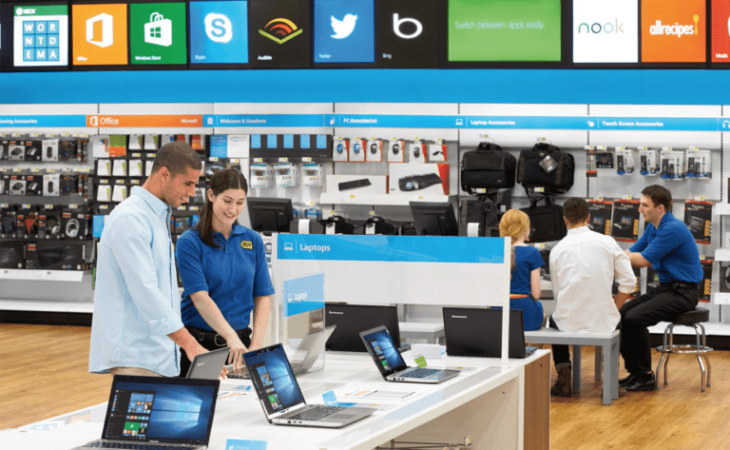With ease of portability and improved performance, laptops are ready for use at work or at home. If you haven’t purchased a new laptop for a couple of years, you might be wondering what’s changed. The fast response is a lot of it. But you’re not expected to think about being left in the dark when it comes to what to look for on a laptop. Although there are a lot of choices for size, efficiency, operating systems, and price, this gives you the opportunity to get a laptop that’s right for your needs.
Don’t be afraid when you go to a supermarket or watch all the options available on the market online. We’re going to lead you through all the important things you need to consider when choosing your new laptop.
Table of Contents
Operating System
Nothing can come between tech-savvy individuals other than the option of the operating system. For them, the operating system is simply what makes the machine run, and whether it runs well, it doesn’t matter to them. For some, the operating system is going beyond the machine. They become loyal to the point of not even knowing the presence of the other. It’s becoming a way of life. Mac vs. Windows. Google (Chrome OS) has been an operating system game player over the last few years, but it’s got a way to go. The operating system you choose will depend on your personal preferences.
Windows
Windows is the most widely used operating system and its adaptability is unsurpassed. Windows is present on a variety of products ranging in price from under $200 to more than several thousand dollars. Windows is the best because it also comes with touch screens and fingerprint readers. Windows 10 is regarded as Microsoft’s most recent operating system and is an improvement over prior versions.
MacOS
MacOS is only available on Apple’s line of laptops. MacOS offers similar functionality to Windows 10, but brings a better interface for users. They come at a price, too. A low-end Macbook will cost the same as a top-of-the-line Windows laptop.
Chrome OS
Google’s Chrome OS is the newest operating system on the market and is available on the cheap Chromebooks range of laptops. While it’s easy and stable, Chrome OS is more limited than Windows or Mac. Most of the software that you use on Chrome OS are ‘web apps’ and don’t operate all that well offline. Google has been working on developing this feature in the Google PixelBook high-end.
Screen size and weight
One of the benefits of laptops is that you can take them wherever you go. After all, if you remained in one location, you’d have a desktop. You’re going to want to evaluate the size of the screen for portability.
11 to 12 inches: the smallest and lightest laptop size available. A laptop of this size will usually weigh from 2.5 to 3.5 pounds.
13 to 14 inches: Laptops in this range provide a working balance between portability and usability and a weight of about 4 pounds.
15 inches: 15-inch laptop is the most common laptop on the market. It’s a big enough screen while still being compact for work or travel. Expect a laptop of this size that weights between 4.5 and 6.5 pounds.
17 to 18 inches: these are the biggest laptops you’ll ever find. They work better if you’re planning to work in one position every day. Larger laptops can have more computing power for higher-demand jobs.
Display
You’ll want more pixels to fit more content on your screen and to get a sharper image. Most budget laptop computers will either have a 1366×768 display or an 800×600 screen. We recommend, if you can afford it, to get an HD monitor. Full HD or 1080p is also know as a television. Laptops with higher resolutions, like 2560×1600 or 3840×2160, are more advanced. The larger the display, the greater the electricity consumption and the decrease in battery life.
Performance Specifications
Quality specs are what a lot of device buyers normally do. The thing that matters most to consumers is that a laptop does what it needs to do. Simply put, it’s working. Depending on the type of work you do with your machine, it will decide what you need inside of it. Below are the main components you’re searching for on your new laptop.
CPU: The CPU is known to be the brains of a machine and has a significant influence on its output. Intel and AMD are the two most popular CPU makers you’ll find in a new laptop. Here’s a rundown of the various types of CPUs you’re going to find on the market.
- Intel Core i3, i5 & i7: Intel is by far the most commonly used CPU producer. Their CPUs can be used in more desktops and laptops than any other maker. Intel CPUs come in a variety of different variants, each providing a range of performance and processing power. The most popular variant of the Intel Core CPU is i5. Core i5 offers the perfect amount of price efficiency. Look for versions that end up in U when looking at the details for a laptop (ex: Core i5-7200U). These are the most common type of CPU. Models ending in Y are low power and have the worst results compared to U. The Core i7 is a step up in the strength and efficiency of the i5. The same model number differentiations are added to these CPUs, with model numbers like number 8 (e.g. Core i7-8250U) being the next generation of the Core series. The low-end Core Processor, i3, has the lowest performance capability but comes with a lower price tag. Of these three options, Core i5 is recommended for the right balance of performance and price.
- AMD Ryzen Mobile: AMD is another common producer of CPUs. Their Ryzen CPUs are designed to compete with the Intel Core i5 and i7 CPUs. The performance variations between both the Intel and AMD CPUs are minor. What is important to point out is that AMD CPUs need more power to run. What Processor you’re going for will come down to your computing needs.
RAM: RAM, or Random-Access Memory, is a hardware component that stores data on your computer temporarily. It acts as a working memory for the machine. Most of the sub-$250 laptops are coming with 2GB. You’re going to want a budget of at least 4GB, 8GB is you’re going to be able to invest a little more. Anything over 16GB is more than what the average computer user wants.
Space: Storage space on your laptop will come down to what you’re using it to do. We recommend that you get a laptop with a solid state drive (SSD). The SSD can deliver higher speeds and a much faster laptop overall.
Graphics Chip: Integrated graphics chip (one that shares machine memory) works great for most computer users and is used in most laptops. If you play sports, build 3D graphics or make high-resolution video editing, you’ll want to upgrade to a discreet AMD or Nvidia graphics processor. Like CPUs, you’ll come across high-end and low-end graphics cards. Determine your graphics needs when determining which graphics card your new laptop would need.
2 in 1
A 2-in-1 or hybrid computer is a mash-up of a conventional laptop and a tablet. There are two different designs: a detachable screen that comes out of the keyboard, and a lightweight laptop that hinges on changing modes at the middle. Each design is usually better suited to one role than the other. A detachable is a better tablet experience, with a compact style that fits best as a laptop. If you’re not sure if you’d take advantage of the tablet functionality, you’d better stick to a standard laptop. It’s worth noting that the compact 2-in-1 style has a better battery life than the detachable edition.
Budget
For all the knowledge of performance requirements and operating systems, the most important aspect of purchasing a new laptop is your budget. It’s easy to recommend all the high-end components and features, but it doesn’t matter if you can’t afford them. You want a laptop that doesn’t break the bank. Luckily, laptops have become more affordable than ever before, with some coming in under $200. So, no matter your budget, you’re going to be able to find a laptop that suits your computer needs with confidence.
$150 to 250: this price range would be the cheapest laptops on the market. This would include Chromebooks and Windows low-end systems. Performance and features would be poorer than the higher-priced models. This price range is perfect for finding a secondary computer or a simple children’s laptop.
$250 to 600: Intel Core i5 or AMD A8 CPU, 4GB of RAM and 500GB of hard drive will start offering you the components you want on your computer. Great for the usual requirements of work. With that, you’ll have a trade-off that you don’t have an SSD, a full HD monitor, or a long battery life. If you can go up to the next level, it’s worth it.
$600 to 900: this is a sweet spot for price, efficiency and purpose. You will begin to see quality features and styles, such as metal finishes. You’ll also notice better resolutions, screens, battery life, and SSDs. A laptop in this price range is one you’re going to have for a long time.
Over $900: If you want top-of-the-line processing capacity, graphics, RAM capabilities and displays, you’ll find them on these laptops. This is where the Apple MacBooks start, along with Windows high-end computers. This should only be an option if you can afford it.
Putting it all together
Now that you have all the details you need, you can go to any shop or visit any website and find a laptop that suits your needs. – individual is different, so make sure you consider all the important aspects of a laptop.
You don’t want to spend for more machine than you need, but you don’t want to get stuck with a laptop that needs to be replaced in a year, or sooner. If you’re trying to update the organization’s laptops and operating systems, talk to The Help Guys specialists. We’re going to work with you to find the best machines for your employees’ needs and have them set up, so they’ll be able to get to work as soon as the machine starts up.










